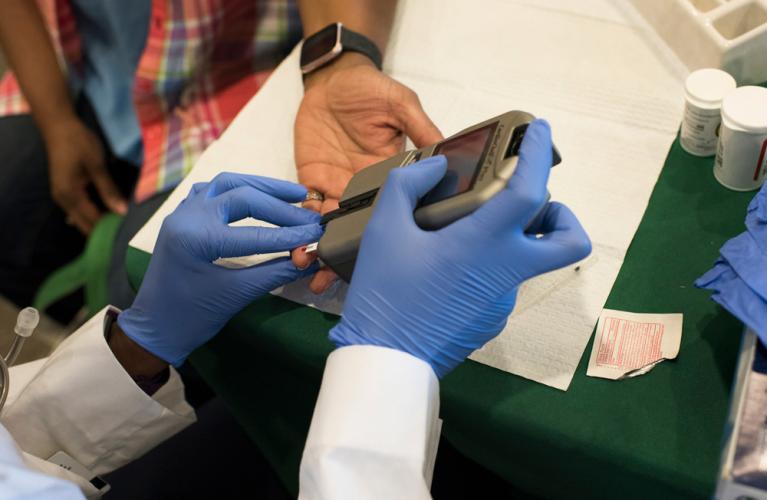
Ohio University Heritage College of Osteopathic Medicine researchers link social factors with diabetes rates in Appalachia

Three social determinants of health–children in poverty, food insecurity and overall socioeconomic status–significantly correlate with southeast Ohio diabetes rates according to a recent study by Samuel Borgemenke, second year Ohio University Heritage College of Osteopathic Medicine student, and Allyson Hughes, Ph.D., assistant professor in Heritage College’s Department of Primary Care.
Social determinants of health are environmental and social conditions influencing health, wellbeing, and quality of life. Previous studies have found that up to 80 percent of a person’s health is influenced by these determinants, compared to interactions with health providers. Given that diabetes rates in southeastern Ohio are more than double the national average, identifying the most influential social factors can offer valuable insight to improve diabetes care, prevention, and health policy in the region.
Numerous social determinants of health such as cultural attitudes toward health care, primary and mental health care provider shortages, low access to quality education and general geographical barriers impeding access to care are common in Appalachian regions of the U.S., including southeast Ohio. Prior studies found these, and other factors are linked to the prevalence of obesity in the region and potentially hinder diabetes care.
Borgemenke and Hughes expanded on existing research by conducting a secondary data analysis that took a closer look at the specific social determinants of health influencing the rate of diabetes in Appalachian Ohio counties.
“I picked six different social determinants, and I looked at how they differed between Appalachian and non-Appalachian counties in Ohio,” said lead author Borgemenke. “More often than not, the Appalachian counties were more underserved and had less resources and access to medical care.”
Of the six determinants examined, children living in poverty, food insecurity and overall socioeconomic status were found to significantly correlate with diabetes prevalence and incidence, with children in poverty being the strongest predictor for diabetes prevalence. Each of these factors are associated with issues–such as access to preventative care and affordable nutritious foods–which can increase the risk of developing diabetes.
Co-author Hughes emphasized how these factors, when examined generationally, may create a genetic predisposition for developing diabetes.
“You can look historically at this region and see how generationally disruptive it’s been,” said Hughes. “

People who go through traumatic events can have offspring that are up to three times more likely to have diabetes and other metabolic syndromes, and it's not their fault. It’s because they were in the wrong place at the wrong time.”
Diabetes is the leading cause of kidney failure, adult blindness and lower-limb amputations in the U.S. Additional comorbidities include increased risk of cardiovascular disease, hypertension, depression and overall poor mental health which can impact self-management behaviors.
The prevalence of these potential co-occurring conditions demonstrates a need for care providers and health care policy makers to employ effective treatment and prevention tactics to preserve public health. Understanding the various factors which may contribute to the development of diabetes beyond the health care setting is an important step in the direction of more comprehensive care.
“As a clinician or as a researcher you need to know everyone's cultural perspectives so you can better serve them,” said Hughes. “We need to focus on embracing other people's differences in order to get them help.”
Borgemenke and Hughes’ study was accepted for published in the Journal of Primary Care and Community Health. This project was completed as part of the Research and Scholarly Advancement Fellowship, which provides Heritage College students who have successfully completed their first year of medical school with the opportunity to conduct intensive short-term research with a mentor.
